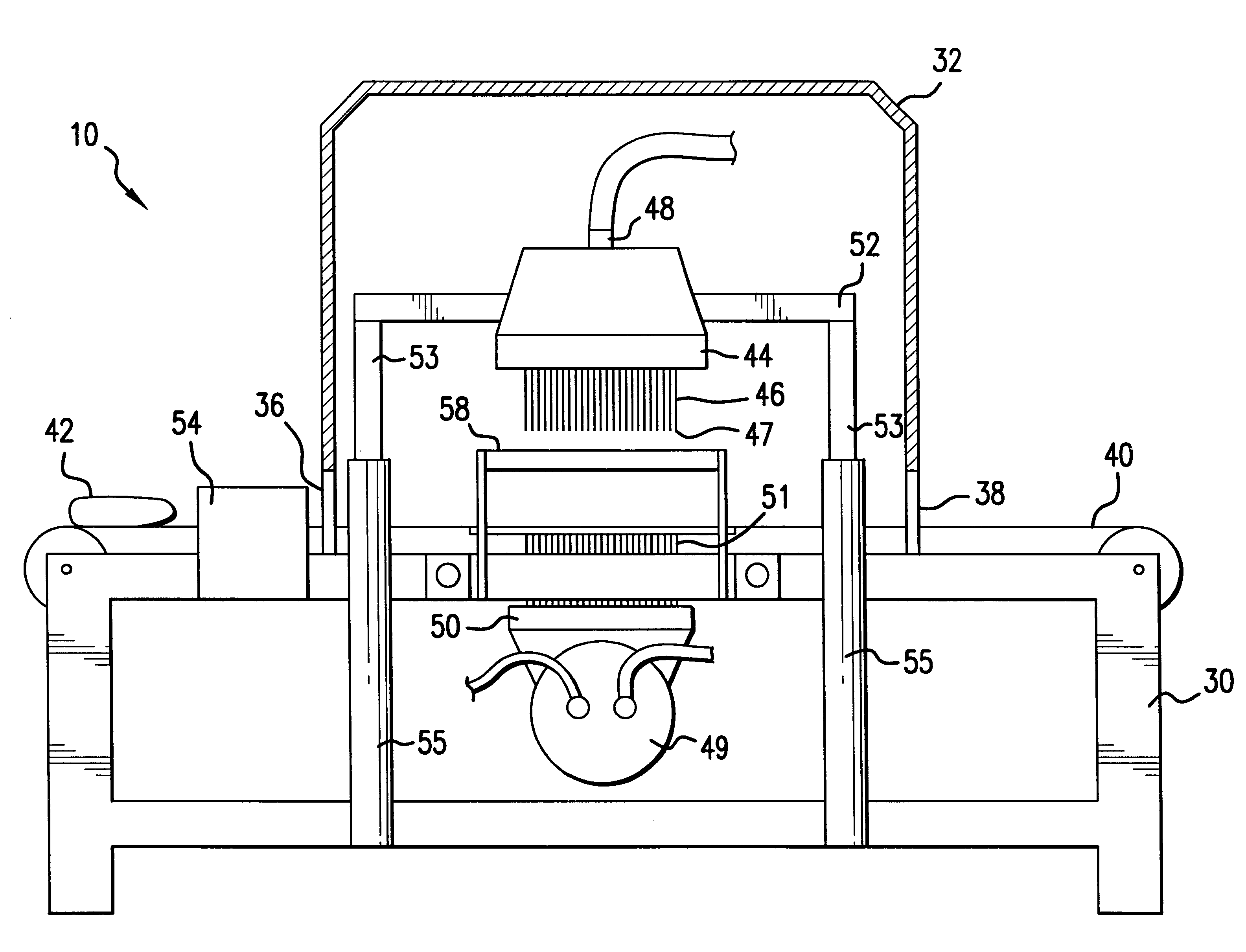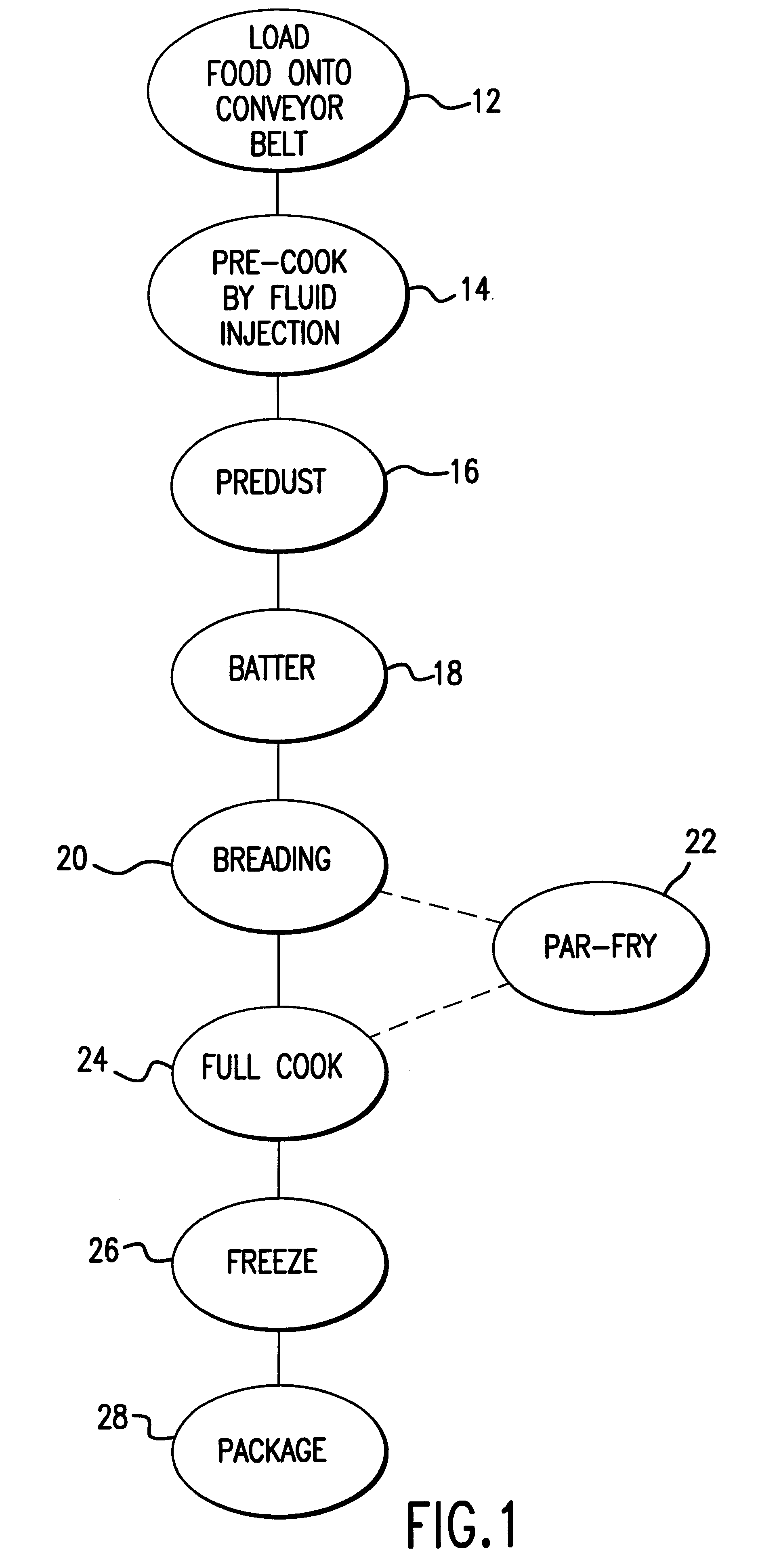Process for injecting thermal fluids for food processing
a technology of thermal fluid and food processing, which is applied in the field of cooking food methods and equipment, can solve the problems of excessive cooking of the surface portions of food products, affecting the quality of food, and not heavily relying on consumers to accomplish any part of the required cooking, etc., so as to eliminate any redness in the vicinity of bones, maximize product yield, and avoid adverse effects on food quality
- Summary
- Abstract
- Description
- Claims
- Application Information
AI Technical Summary
Benefits of technology
Problems solved by technology
Method used
Image
Examples
Embodiment Construction
FIG. 1 is a schematic illustration of one example of an integrated process for cooking prepared meals and meal items. A food product is loaded on a conveyor belt 12. The conveyor belt transports the food product to a fluid injector 14 where the food product is pre-cooked by condensable fluid inserted into the food product. If the food product is to be breaded, the food product is then passed to a dusting station 16, a battering station 18, and a breading station 20. At this point the food product may optionally be subjected to a frying station 22. The food product is then conveyed to the hot air oven 24 where the cooking is completed. The food product is then frozen at station 26 and packaged at station 28 for delivery to the customer.
A fluid injection apparatus 10 useful for injecting the condensable fluid, is shown in FIGS. 2 and 3. FIG. 2 is a side elevational view of the apparatus and FIG. 3 is a front elevational view of the apparatus with the housing removed. The apparatus 10 ...
PUM
 Login to View More
Login to View More Abstract
Description
Claims
Application Information
 Login to View More
Login to View More - R&D
- Intellectual Property
- Life Sciences
- Materials
- Tech Scout
- Unparalleled Data Quality
- Higher Quality Content
- 60% Fewer Hallucinations
Browse by: Latest US Patents, China's latest patents, Technical Efficacy Thesaurus, Application Domain, Technology Topic, Popular Technical Reports.
© 2025 PatSnap. All rights reserved.Legal|Privacy policy|Modern Slavery Act Transparency Statement|Sitemap|About US| Contact US: help@patsnap.com



